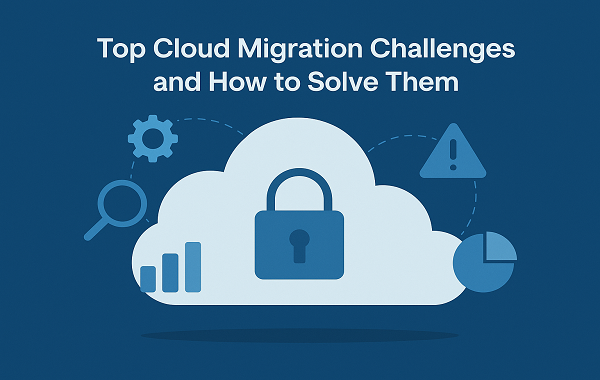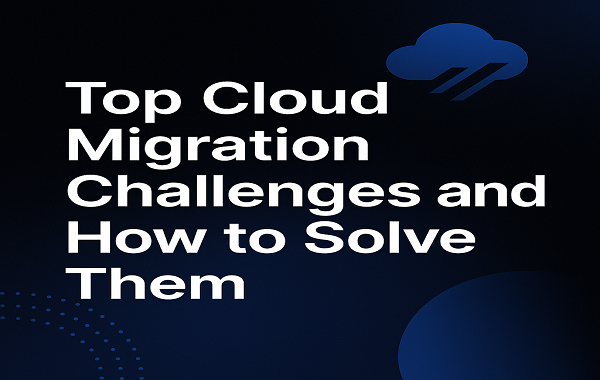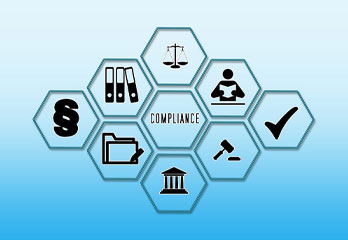Top Cloud Migration Challenges and How to Solve Them
Cloud migration has become a pivotal strategy for organizations aiming to enhance their operational efficiency, scalability, and overall performance. However, the journey to the cloud is not without its hurdles. In this article, we’ll explore the common challenges faced during cloud migration and provide practical solutions to navigate these obstacles successfully.
Table of Contents
1. Understanding Cloud Migration
2. Challenge 1: Data Security and Compliance
3. Challenge 2: Downtime and Service Disruption
4. Challenge 3: Legacy Application Migration
5. Challenge 4: Cost Management
6. Challenge 5: Complexity of Migration
7. Strategies for a Successful Cloud Migration
8. Choosing the Right Cloud Model
9. The Role of Cloud Architecture Consulting Firms
10. Expert Tips for a Smooth Transition
11. Conclusion
12. Call to Action
Understanding Cloud Migration
Cloud migration refers to the process of shifting an organization’s digital assets, applications, and data from on-premises infrastructure to cloud-based environments. This transition can offer numerous benefits, including improved flexibility, scalability, and cost-effectiveness. However, the migration process can also present significant challenges that organizations must address to ensure a successful transition.
Benefits of Cloud Migration
· Scalability: Easily scale resources up or down based on demand.
· Cost Efficiency: Reduce capital expenditures on hardware and maintenance.
· Accessibility: Enable remote access to applications and data from anywhere.
Importance of a Cloud Migration Strategy
A well-defined cloud migration strategy is essential for guiding organizations through the complexities of the process. This strategy should encompass clear goals and metrics for success, as well as a phased approach to migration.
Challenge 1: Data Security and Compliance
One of the most pressing concerns during cloud migration is ensuring that data remains secure and compliant with industry regulations. Organizations often worry about data breaches, loss, or unauthorized access.
Solutions to Enhance Data Security
-
Implement Robust Encryption: Encrypt data both at rest and in transit to protect sensitive information.
-
Conduct Regular Security Audits: Regularly assess security measures and compliance with regulations such as GDPR or HIPAA.
-
Utilize Multi-Factor Authentication: Add an extra layer of security by requiring multiple forms of verification for access.
Challenge 2: Downtime and Service Disruption
Downtime during migration can lead to significant business interruptions and loss of revenue. Organizations must carefully plan their migration to minimize disruptions.
Strategies to Mitigate Downtime

-
Choose Off-Peak Hours for Migration: Schedule migration activities during low-traffic periods to reduce the impact on users.
-
Implement a Phased Migration Approach: Migrate applications in stages rather than all at once to limit potential disruptions.
-
Test Thoroughly Before Full Deployment: Conduct extensive testing in a controlled environment to ensure everything functions correctly before going live.
Challenge 3: Legacy Application Migration
Migrating legacy applications to the cloud can be particularly challenging due to compatibility issues and the complexity of the existing systems.
Solutions for Legacy Application Migration
-
Assess Application Dependencies: Identify interdependencies among applications and plan migration accordingly.
-
Consider Re-Architecting Applications: In some cases, it may be more effective to redesign applications for the cloud rather than migrating them as-is.
-
Utilize Containerization: Containerize applications to ensure they run consistently across different environments.
Challenge 4: Cost Management
While cloud solutions can be cost-effective, organizations often encounter unexpected expenses during migration. Without proper planning, costs can spiral out of control.
Tips for Effective Cost Management
Conduct a Thorough Cost Analysis: Assess current infrastructure costs and compare them to projected cloud costs.
Monitor Usage Regularly: Use cloud management tools to track resource usage and adjust accordingly to avoid overspending.
Negotiate with Cloud Providers: Explore pricing options and negotiate contracts to secure the best possible rates.
Challenge 5: Complexity of Migration
The complexity of migrating to the cloud can overwhelm organizations, especially those with intricate IT architectures. Identifying and documenting interdependencies is crucial for a successful migration.
Simplifying the Migration Process
-
Create a Comprehensive Migration Plan: Develop a detailed plan that outlines each step of the migration process, including timelines and responsibilities.
-
Engage with Cloud Architecture Consulting Firms: Leverage the expertise of consulting firms to guide the migration process and address complex challenges.
-
Utilize Automation Tools: Employ automation tools to streamline repetitive tasks and reduce the likelihood of human error.
Strategies for a Successful Cloud Migration
To navigate the challenges of cloud migration effectively, organizations should adopt a strategic approach. Here are some key strategies to consider:
Develop a Clear Migration Roadmap
-
Outline the phases of migration, including assessment, planning, execution, and optimization.
Engage Stakeholders Early
-
Involve key stakeholders from different departments to gather insights and ensure alignment on goals.
Invest in Training and Support
-
Provide training for staff to familiarize them with new cloud tools and processes.
Choosing the Right Cloud Model
Selecting the appropriate cloud model—public, private, or hybrid—is critical to the success of the migration. Each model offers different advantages and considerations.
Public Cloud
· Cost-effective and scalable, ideal for non-sensitive workloads.
Private Cloud
· Offers enhanced security and control, suitable for sensitive data and compliance needs.
Hybrid Cloud
· Combines the benefits of both public and private clouds, allowing for flexibility and scalability.
The Role of Cloud Architecture Consulting Firms
Cloud architecture consulting firms play a vital role in guiding organizations through the complexities of cloud migration. These firms offer expertise in:
-
Assessing Current Infrastructure: Evaluating existing systems to identify migration opportunities.
-
Designing Cloud Architecture: Creating a cloud architecture that aligns with business objectives.
-
Implementing Best Practices: Ensuring adherence to industry standards and best practices throughout the migration process.
Expert Tips for a Smooth Transition
To facilitate a successful cloud migration, consider these expert tips:
-
Document Everything: Keep detailed records of the migration process, including configurations and settings.
-
Communicate Regularly: Maintain open lines of communication with all stakeholders to address concerns and provide updates.
-
Plan for Post-Migration Optimization: After migration, continuously monitor and optimize cloud resources for performance and cost-efficiency.
Conclusion
Navigating the challenges of cloud migration requires careful planning, strategic decision-making, and ongoing management. By addressing common obstacles and implementing effective solutions, organizations can successfully transition to the cloud and reap the benefits of enhanced efficiency and scalability.
Call to Action
Are you considering a cloud migration for your business? Reach out to us today for expert guidance and tailored solutions that suit your unique needs. Together, we can make your cloud journey a success!







